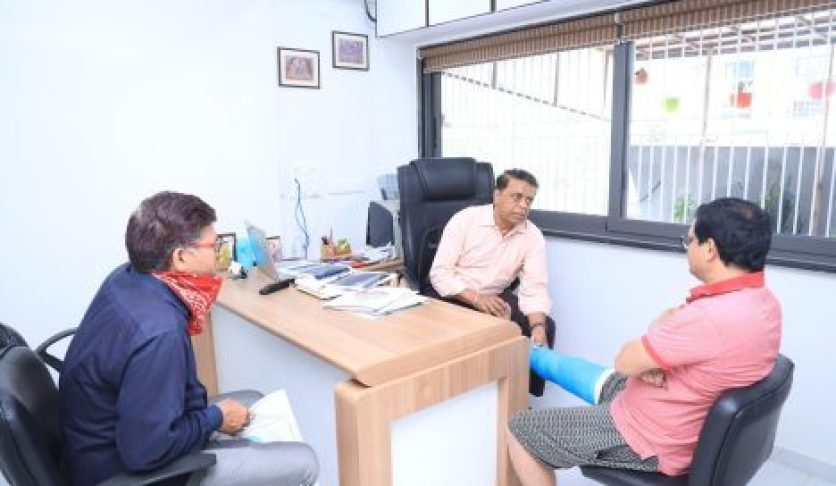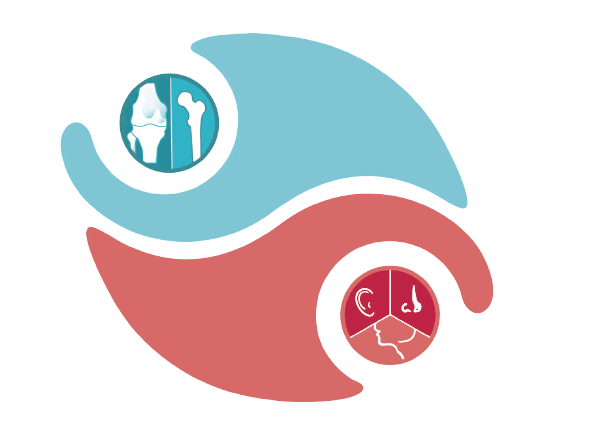Arthroscopy And Sports Injury
- Home
- Arthroscopy And Sports Injury

Sports injuries and Arthroscopic surgeries
Arthroscopic surgeries also known as key-hole surgeries are performed for two reasons– they may be diagnostic in nature or they may serve as treatment of choice for injuries of the knee, ankle, hip or shoulder joints. As the name suggests Arthroscopic surgery is performed through an Arthroscope (a laproscope). It is a keyhole surgery– the arthroscope being inserted through tiny one centimetre insicions. This kind of surgery may be performed as a diagnostic procedure– but more often than not it serves as a therapeutic procedure in addition to its diagnostic nature.
The common Arthroscopically treated injuries are:
Meniscal injuries
Anterior Cruciate and Posterior Cruciate Ligament Injuries of the Knee Osteochondritis dissecans (OCD),Jumpers Knee,LateralCollateral Ligament Injury,Medial Collateral ligament Injury and Patellar Dislocation
Meniscal injuries may be the most common knee injury. The menisci are 2 semilunar wedges in the knee joint positioned between the tibia and the femur. They are essentially extensions of the tibia that act to deepen the articular surfaces of the otherwise relatively flat tibial plateau to accommodate the relatively round femoral condyles. Despite their attachments, both menisci have mobility. This mobility allows for improved conformity of the tibiofemoral joint. Meniscus tears are sometimes related to trauma, but significant trauma is not necessary. A sudden twist or repeated squatting can tear the meniscus. Meniscus tears typically occur as a result of twisting or change of position of the weight-bearing knee in varying degrees of flexion or extension. Symptoms include:
- Joint line tenderness
- Effusion(fluid in the joint)
- Restricted motion caused by pain or swelling is also common
Treatment is predominantly surgical. The basic principle of meniscus surgery is to save the meniscus. Tears with a high probability of healing with surgical intervention are repaired. However, most tears are not repairable and resection must be restricted to only the dysfunctional portions, preserving as much normal meniscus as possible.Surgical options include Arthroscopic partial meniscectomy (wherein tears in the avascular portion of the meniscus or complex tears that are not amenable to repair. Torn tissue is removed, and the remaining healthy meniscal tissue is contoured to a stable, balanced peripheral rim. ) or meniscus repair ( for tears that occur in the vascular region, are longer than 1 cm, involve greater than 50% of the meniscal thickness) . Arthroscopy, a minimally invasive outpatient procedure with lower morbidity, improved visualization, faster rehabilitation, and better outcomes than open meniscal surgery, is now the standard of care. Human allograft meniscal transplantation is a relatively new procedure but is being performed increasingly frequently. Specific indications and long-term results have not yet been clearly established.
Anterior Cruciate Ligament Injury
These injuries are most often a result of low-velocity, noncontact, deceleration injuries and contact injuries with a rotational component. Contact sports also may produce injury to the anterior cruciate ligament (ACL) secondary to twisting, valgus stress(outwards stress), or hyperextension all directly related to contact or collision. Generally, the recommendation is that surgical intervention be delayed at least 3 weeks following injury to prevent the complication of arthrofibrosis(stiffness of the joint). The methods of surgical repair may be categorized into 3 groups, primary repair, extra-articular repair, and intra-articular repair.
Primary repair is not recommended except for bony avulsions, which are mostly seen in adolescents.
Reconstruction is performed Arthroscopically . This procedure requires graft stabilization with some type of fixation hardware for all of the graft options. The stabilization may be performed with metal interference screws, bioabsorbable screws, endobuttons, and cross pins.
The repair options are:
Bone-patella-bone autografts are currently popular because they yield a significantly higher percentage of stable knees with a higher rate of return to preinjury sports. The major pitfall of these grafts is their association with postoperative anterior knee pain (10-40%).
Hamstring tendon grafts are associated with a faster recovery and less anterior knee pain.
Posterior Cruciate Ligament Injury
The Posterior Cruciate Ligament (PCL)is described as the primary stabilizer of the knee.PCL injuries are less common than Anterior Cruciate Ligament (ACL) injuries, and they often go unrecognized. Injury most often occurs when a force is applied to the anterior aspect of the proximal tibia when the knee is flexed. The primary function of the PCL is to prevent posterior translation of the tibia on the femur. The PCL also plays a role as a central axis controlling and imparting rotational stability to the knee.
In chronic PCL tears, discomfort may be experienced with the following positions or activities:
A semiflexed position, as with ascending or descending stairs or an incline
- Starting a run
- Lifting a load
- Walking longer distances
Individuals may describe a sensation of instability when walking on uneven groundSurgical reconstruction is considered, graft recommendations include the following:
- Patellar tendon
- Quadriceps tendon
- Hamstring tendons6
- Medial head of gastrocnemius
Bony PCL avulsion can be repaired surgically by fixing the avulsed bony fragment, with restoration of PCL integrity and function. Even delayed diagnosis of avulsion injuries can be repaired with screw fixation if the PCL substance is sufficient.
Surgical reconstruction is important especially with multiple ligament injuries, posterolateral corner injury, or when there is persistent pain, instability, or disability. Acute reconstruction is more successful than reconstruction of chronic injuries. The stabilization may be performed with metal interference screws, bioabsorbable screws, endobuttons, and cross pins.
Knee Osteochondritis dissecans (OCD)
Osteochondritis dissecans (OCD), by definition, is a disorder of one or more ossification (growth)centers, characterized by sequential degeneration or aseptic necrosis(break down) and recalcification Arthroscopy is preferred .
Drilling of the defect may be performed, with the hope that revascularization (regrowth of blood vessels) will occur.
Pinning may be performed to stabilize the fragment. Stainless-steel pins usually require removal to avoid additional chondral injury. Resorbable pins can be used to avoid the need for removal; however, they may not be rigid enough or may not last long enough to allow healing.
Excision of the fragment and removal of loose bodies may be necessary.
Screw fixation may be performed for fragment stabilization. In this method, usually a specialized screw or Herbert-type screw, as shown in the images below, is used.
Osteochondral(bone and cartilage) autograft transplantation (OATS) involves harvesting cylindrical osteochondral grafts from other areas of the knee to reconstruct a weight-bearing surface. A maximum 1-cm lesion (crater) depth is allowed for use of this treatment method.
